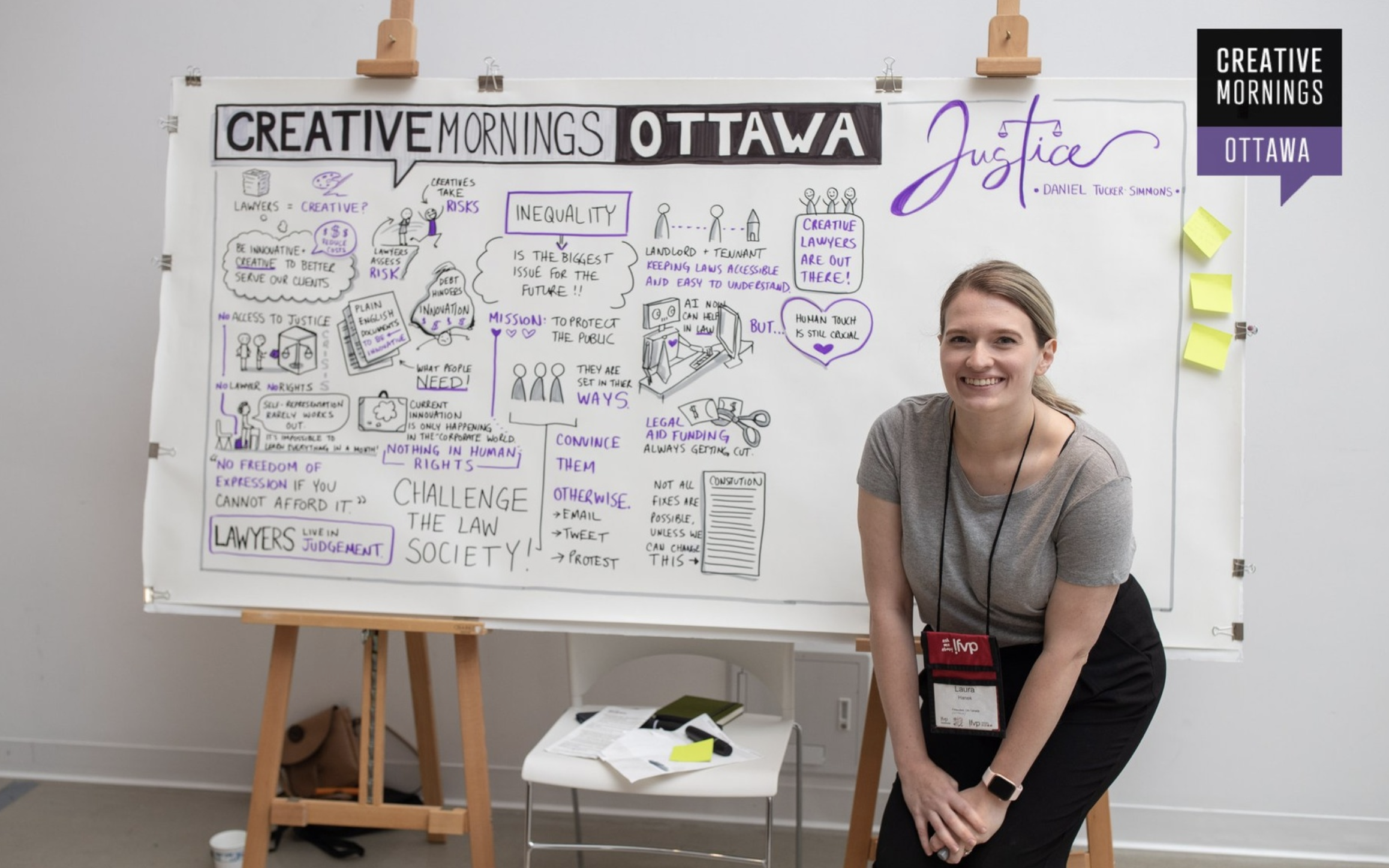What to Expect When Hiring a Graphic Recorder
You may have seen a Graphic Recorder perform their magic at a conference or meeting before, or maybe not. In real-time they are translating the ideas and concepts of the room into an easier-to-digest visual language. They make it look so easy, don't they? You may be at the same event they are working at and wondering how you can work with them. Hopefully I can provide some clarity on how I work with clients! I've put together sort of a FAQ list of working with a graphic recorder:
In what ways can I use a Graphic Recorder?
Oh, let's get creative shall we? Traditionally they are used at conferences, keynotes and facilitated meetings. Some non-traditional ways to use a recorder include:
Personal goal mapping/setting
Branding your business
Explaining a big concept (this would be more of an infographic)
I have also had the request TWICE to do graphic recordings of speeches at weddings! I politely declined, but kinda of a fun out-of-the-box thinking!
How is the fee structured?
I have a fee for half-days and for full-day for in-person conferences or meetings. If your meeting is only 45 minutes long, you would fall into the half-day category for the fee.
What is included in the fee?
Pre-planning meeting: I would arrange a "discovery" meeting over the phone, or in person if that is possible. I want to get a better understanding of your organization, and why you are holding this meeting/conference/gathering. I want to know how many people will be there, how the facilitation will be structured and what the desired outcome of the day is. I want to figure out with you how I can be used for maximum idea-producing potential!
Visuals for the meeting: Do you need an agenda made? Templates created? Infographics? Slides edited? These are all things that I can help you with to make your day an absolute hit with higher engagement, better productivity and more fun!
Preparation work: On my end I will continue to do some research and preparation work leading up to the meeting. I will prepare the boards ahead of time with a title we decided on.
Meeting/Conference Day: Ideally I would arrive an hour before anything starts so that I have time to figure out the best set up for the boards. I can be at the front of the room working directly with the facilitator or off to the side as not to be a complete distraction. Again, we would hopefully figure this out ahead of time depending on your needs. If possible I always like to arrange a meeting after everyone has left with the client to go over the boards one-on-one to discuss.
Post Production work: I will take the completed piece and have it professionally scanned. From there I will edit any spelling mistakes, add anything that I may have missed in the meeting and send it off to you in a packaged file within 5-8 business days. I can also ship the original if that's something of interest. Any animation or cut outs of graphics would be an additional fee at this point.
What do I do with this magic after the day is over?
I love to recommend to clients for them to hang it up in the office and let it be celebrated. For the visuals of the meeting to be reviewed every day, they can be etched into our brain and hopefully the goals can be reached much faster. Either have it printed on a large poster size, or even multiple copies to hang up in a cubical.
What kind of materials do you work with?
Typically I work with Neuland markers and paper. I attach the paper onto foam-core so that I have something stable to work on. If your set-up allows it I can attach my paper directly onto the wall so I am unlimited in length! I also have an iPad Pro which allows me to record digitally. I can project onto a wall or a TV screen in real-time. There are pros and cons to both, and I can certainly have that discussion with you to see what is better suited to your meeting.
How do you know how much room you need on the paper?
This is different for every meeting and each style of facilitation. In a more keynote style situation, they are rehearsed and are almost always on-time. If I'm halfway through my boards and I'm 30 mins into the hour, I'm in good shape. With meetings that include a lot of conversation, audience input and distilling of information, the boards can go any direction. Yes, I have ended up with some blanks on my pages - meetings can be quicker than expected! I just try to be as flexible as possible, and I can work with the blank spots later in post-production.
How do I find a Graphic Recorder?
There is actually an organization that holds us all together! The International Forum of Visual Practitioners is an organization that keeps us up-to-date on industry standards, keeps us in the know with technology and what clients are looking for. You can post a job there, or you can also search registered Graphic Recorders in your area. There may be someone in your town that you didn't know existed! Take us out for a coffee, we don't bite! If you want to find out where you can become a Graphic Recorder yourself, that's the place to start your research!
Hopefully that helps with some of the mystery of hiring a Graphic Recorder! If you have any further questions please don't hesitate to reach out! laurahanek@swoopmedia.ca

